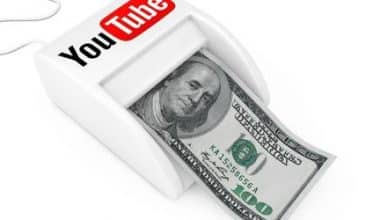Selling on eBay can be a terrific way to make some additional money, regardless of whether your goal is to launch your own online business or simply to get rid of some old possessions. This article has been jam-packed with as much information as possible. You’ll have all the information you need on how to make money on eBay and how to earn without selling anything on the site.
How to Make Money on eBay
With over 135 million members, eBay is among the most popular shopping sites in the world, and as a result, there is a huge market for everything that is offered there, from books and music to vehicles and artwork. eBay offers a lot of prospects for profit because of its large user base and high demand. eBay gained popularity because it is known as a location where goods may be bought and sold. These top 16 methods for selling items on eBay can help you maximize your profits:
#1. Recognize the Ideal Items to Offer on eBay
You should take some time to consider whether the item you’re selling is in the correct condition before listing it on eBay, whether it’s used books or your collection of Pokémon cards.
#2. To Sell Something for More Money, Buy It Cheaply.
It’s worthwhile to hunt for inexpensive items to resell at a profit in addition to selling your no-longer-used stuff on eBay. There are other sites to get fantastic prices on goods, including your neighborhood charity shop, a car boot sale, and even eBay itself.
#3. Upkeep Your eBay Profile
On eBay, signing up as a buyer before becoming a seller is the smartest course of action. Other users will be able to see that you have a history on eBay and will be able to trust you as a result.
#4. Examine the Costs on eBay.
You must first determine an item’s value and the cost of selling it on eBay before you can begin to profit from it. Of course, you want to turn a nice profit, but some additional expenses apply when you sell on eBay that you should be aware of.
#5. Pay Attention to Promotions From eBay Sellers.
For private sellers, eBay occasionally launches promotional campaigns. A link to activate them will probably be included in an email you receive, so keep an eye out for them. You might be able to sell your more expensive products for a little less money in seller fees if you can hold off until these bids show up.
#6. Price Your Product as Affordably as Possible.
Utilize eBay’s advanced search feature after choosing an item to sell to find out how much recent sales of comparable things have been. Anything you wish to sell may be searched for, and if you check the “completed listings” box, you will see a ton of other comparable items along with their selling prices.
#7. Low Opening Bids Will Help You Get the Buyers’ Attention.
Although it may be tempting to set the price of your listings high at first, starting your bids at 99p (or a comparable amount) may result in a better sale over time.
#8. Snap Quality Pictures of the Products You’re Selling.
For optimum credibility, include a picture of the item you’re selling. If eBay user feels certain they can see an accurate portrayal of what is being offered, they are considerably more inclined to continue bidding.
#9. Start Auctions When eBay Is Busiest
Think about when you should open the bidding before posting your listing without first thinking about it. A Sunday evening is typically the optimum time to conclude any auction. Auctions heat up during this time because it has been shown that this is when most casual purchasers browse.
#10. Produce Compelling Product Descriptions.
The difficult part is now upon us: creating the product descriptions that will sell your goods. An excellent description may make or break a deal, so take your time.
#11. Never Engage in Shill Bidding On eBay
The practice of “shill bidding” refers to placing bids on an object not out of a genuine desire to purchase it but rather to raise its price, boost its visibility in searches, or otherwise make it appear more desirable. You are not allowed to bid on your auctions, and neither should any of your friends or family members.
#12. Boost eBay Selling Limitations.
Normally, you can only list 10 things with a total value of £650 when you first start selling on eBay. You must establish your reputation as a trustworthy seller on eBay before you can add additional items to your business. This may be done by sending orders promptly, interacting with customers, and gathering positive comments.
#13. Keep in Touch With the Purchasers On eBay
Following the completion of your transaction, make sure to send your buyer a confirmation email as soon as you can and invoice them for the entire sum, including the postage fee.
#14. To Save Money, Put the Products in a Big Envelope.
You can spend less on shipping the goods to the successful bidder if the stuff you’re selling can fit into envelopes.
#15. Always Get Confirmation of Postage When You Sell on eBay
Send every item you are selling via recorded delivery, or at the very least, obtain proof of postage. Particularly because, sadly, there are eBay buyer scammers out there who cause trouble by reporting to eBay that products haven’t been received even when they have been delivered.
#16. Items Should Be Sent With a Handwritten Letter.
Your deliveries will significantly improve by adding a personal touch. The customer will value your personal touch much more than an anonymous eBay username if you send them a thank-you email for their purchase and give them a glimpse into who made the deal.
How to Make Money on eBay Without Selling Anything
Do you realize that there are several ways to earn money on eBay without selling anything? You heard correctly—you don’t need to sell anything on eBay to make money. How, then, can someone profit from eBay without ever selling anything? The methods below will show you how to earn money on eBay without selling anything.
#1. Train to be an Affiliate Marketer.
One of the most common ways to monetize your eBay account without selling anything is using this method. Affiliates typically lead customers to sellers of goods and are compensated with commissions or other fees for each sale they facilitate. The affiliate is where the buyer must purchase the product.
#2. Dropshipping
Dropshipping is a well-liked method of making money on eBay without really selling anything. Then again, what is dropshipping? Dropshipping is a form of retail order fulfillment where shops take orders and ship them straight from outside providers, rather than keeping any inventory on hand. In essence, you create an eBay store and put goods for sale there, but you wait to buy the goods until someone makes a purchase. In its place, you send the order to a supplier, who then sends the product straight to the consumer.
#3. Submit Product Evaluations on eBay.
Joining eBay as a product reviewer is another fantastic option to earn money without selling anything. In essence, you will receive payment for reviewing goods that are offered on eBay.
By telling others about your experiences with a product, you can get money as a product reviewer. The feedback aids the vendor in making improvements to their offering and boosting sales.
#4. Work as a Helper Seller on eBay
Comparable to renting out your eBay account to another user as opposed to letting it sit idle. By doing this, you agree to let another person sell goods on eBay using your account in exchange for a cut of the sales revenue. The primary benefit of assistant selling is that you don’t even need to sell anything because the individual utilizing your eBay account will take care of all of your active listings.
#5. Provide Services for Listing on eBay
With the use of listing tools like listings and photos with descriptions, eBay helps sellers promote their goods. Offering your listing services to other eBay merchants may be a good idea at this time. Processing the listing, writing listings with photographs and descriptions, establishing the auction period, and developing the title and description are some of these services.
Can You Make Good Money on EBAY?
eBay sellers currently earn an average of $42,000 per year as of 2022. Up to $70,000 is sometimes made by sellers! As a result, a sizable number of online vendors rely on eBay as their main revenue source. The maximum amount of merchandise that new sellers can sell on eBay each month is 10 items or $500 in total. For new eBay sellers, it serves as a common upper limit.
Can I Make $1000 a Month on EBAY?
I opened a shop as soon as I understood how much money could be made there. I was able to start making over $1,000 per month—and frequently more—on eBay after setting up a store and devoting a little more time. And all of this was done with just a couple of hours per week of work!
How Much Can I Realistically Make With EBAY?
About $35,000 is the yearly income average for eBay sellers. Many people with high salaries only make a few thousand dollars annually, while some makeup to $70,000. The amount of inventory you can sell, the cost of your goods, and any other costs, such as shipping supplies, all have a role. To explore the site with greater knowledge, learn more about extra eBay data.
How to Make $500 a Month on EBAY?
Steps on how to $500 a Month on ebay:
- Arrange Yourself. Time management is key to running a profitable eBay business.
- Research. Finding an item’s potential value is the first step in the eBay selling process.
- Start with things that you have at home.
- Buy Cheap; Sell High.
- Advertise Your Listings.
- Competition.
Is Flipping on eBay a Good Side Hustle?
To earn extra money during your free time and achieve financial independence, you might consider starting an eBay flipping business. To start flipping and finding good prices, you’ll need to set aside time to look through thrift stores, neighborhood flea markets, estate auctions, and other sources.
How Much Does eBay Take From a $300 Sale?
EBay retains a percentage of the sale if your item is sold. In most categories, this final value fee is equal to 13.25% of the sale price or less, plus $0.30 per order.
Related Articles
- Business Accounting Guide: (+ Free Samples & Courses)
- HOW TO FIND A SELLER ON EBAY: Simple Ways to Search for Sellers
- EBAY LOGO: Meaning, Font, and History






